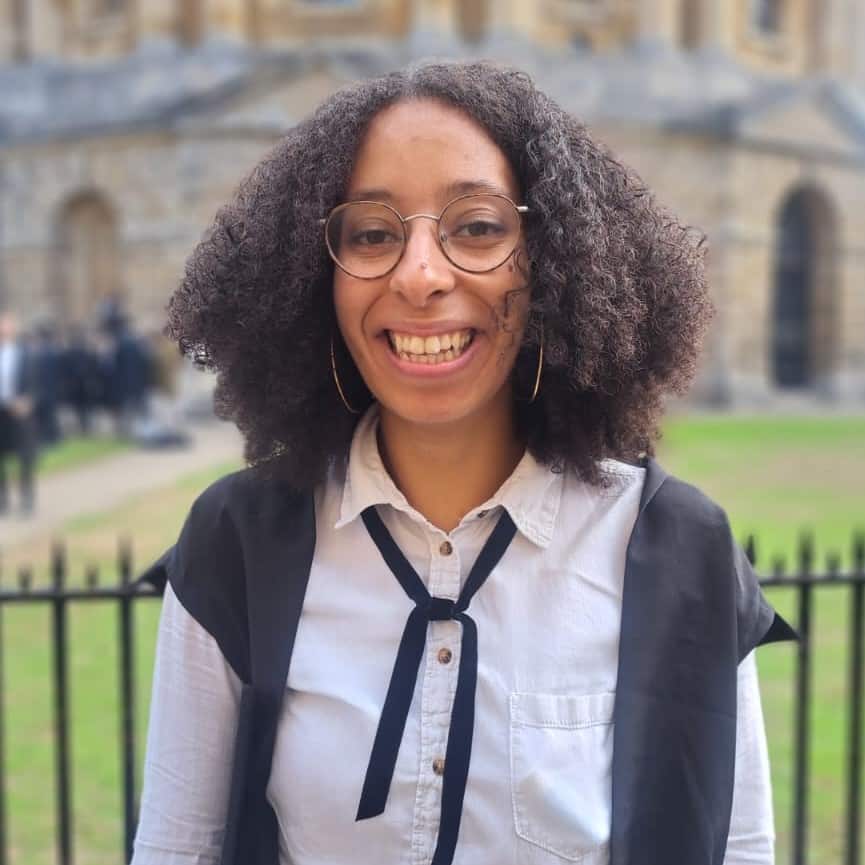Morgan Mitchell
Movement Neuroscientist
Hi, I’m Morgan! I’m currently studying for my PhD at Oxford on a project which looks to improve a person’s recovery and movement following a stroke. Read on to find out more about me and what I do!
My story
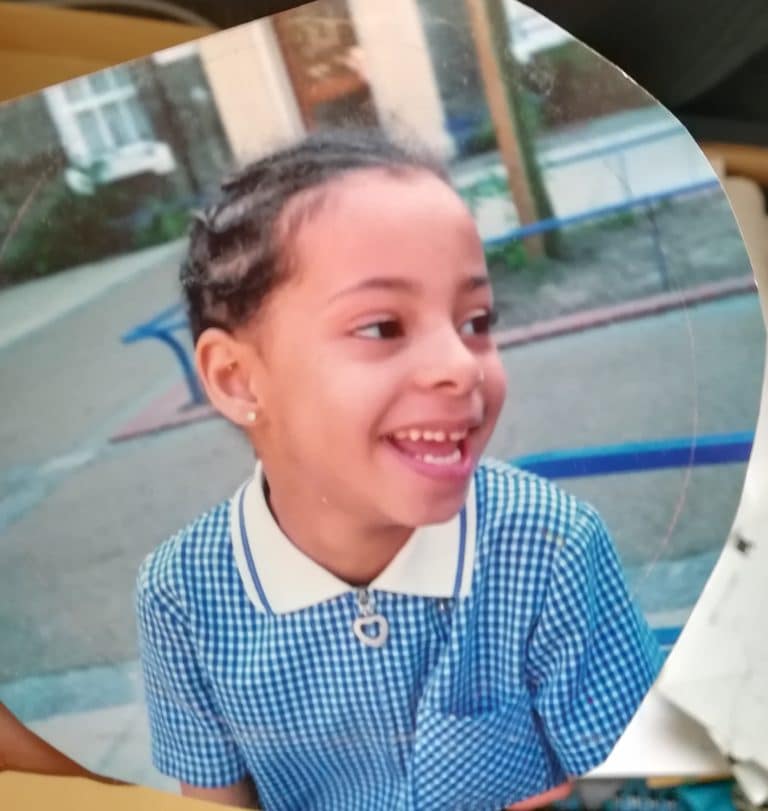
Age 6, a stop off at the local playground after school
I am a born and bred Londoner – I grew up on an estate in East London and my earliest memories are some of the happiest I have. Bike rides with my brother and kicking a football around from early afternoon right through to the evening’s end. My dad had played football semi-professionally for most of his adult life until he was diagnosed with an auto-immune disease which meant he could no longer play – but I see him as my main inspiration for pursuing sports in my childhood and the reason I love sports in all forms as an adult now. I also loved going to school (I know, nobody says that ever!). But it’s true, I really enjoyed learning new things and would often do loads of reading around my school topics to really understand what was being introduced to us in class. Especially, science – I remember reading encyclopaedias and being fascinated by all the random science facts I could find. Most specially, the facts about the human body!
For a long time, I thought this would mean that I had to study medicine to follow this science passion of mine. During my A Levels, however, my dad passed away. As a result, I really struggled through my first attempt at my A Levels so had to rejig my subjects and retake some exams. With medicine being such a competitive degree to get onto I thought it would be best to think about applying to another science subject. But what subject to pick?
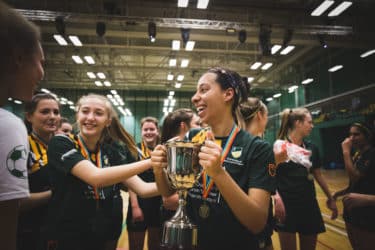
Winning the Nottingham Varsity Series as Captain of University of Nottingham Women’s Football and Futsal Club
For as long as I can remember, I have been primarily interested in people and have marvelled at the human body. As a keen sportswoman from an early age I was captivated by how seemingly coordinated and efficient the body is, while at the same time fragile and mysterious. When I learned that the brain is what governed the processes of the human body, in all its wonder and fragility, I knew I had to study the brain. To do that I had to get onto a neuroscience degree. So, I scoured the internet for neuroscience work experience. I found two competitive programs offering internships in neuroscience labs for A Level students. I applied to both and was awarded both, affording me the opportunity to spend a whole summer in two neuroscience labs at King’s College and Imperial College in London. It was then I knew that studying the brain and working on becoming a researcher is what I wanted to do.
Thankfully, I went on to study an undergraduate degree in Neuroscience at University of Nottingham. I found that I enjoyed my neuroimaging (producing images of the brain to identify structure or activity) and cognition (the process of gaining knowledge through thought, experience and the senses) modules the most. It was learning about how the brain coordinated movement that really gripped me. So, I decided to undertake a Masters of Research degree at the School of Sport, Exercise and Rehabilitation Sciences at University of Birmingham based in their Motor Control and Rehabilitation group. My project focused on developing a way of using the non-invasive brain stimulation techniques (Transcranial Magnetic Stimulation/Transcranial Direct Current Stimulation) and the power of imagination (mental imagery) as a means to help people learn new movement skills. Something which can be useful for a range of people. From those looking to improve their sports performance to people who want to overcome difficulty in movement due to pain or neurological disorders. We were particularly interested in the effect this had not only on performance, but also the underlying “movement” circuits in the brain.
My research
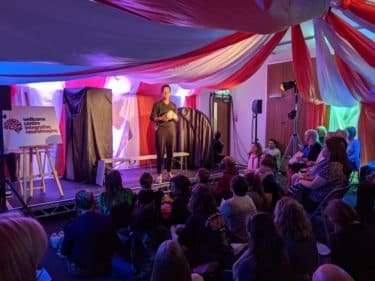
Scene from my department’s play on the history of Neuroimaging at WINdow on the Brain event at Banbury Museum
I am now studying for a PhD (Doctorate degree) in Clinical Neurosciences on a project with Prof. Heidi Johansen-Berg, Prof. Tim Denison and Dr Melanie Fleming. I currently work at the Wellcome Centre for Integrative Neuroimaging on a project which aims to investigate ways of improving rehabilitation for stroke survivors. I’m excited to be exploring something called Targeted Memory Reactivation (TMR) as a way to help stroke survivors learn new movements after losing the use of their hand or arm after a stroke. For TMR we tag each movement with different sounds and we have in-patients learn these movements with the tagged sounds when they are awake. We then play these sounds back to them in the same sequence while they sleep. This biases the natural memory formation processes that already take place during sleep toward the learning of our chosen movement sequence, which strengthens these movement memories and helps the patients learn them quicker than they would be able to without this specific type of training. We hope that this method will make rehabilitation for these patients more efficient and less intensive. Which sounds pretty cool and pretty sci fi if you ask me! It’s definitely not something I ever thought I’d have the pleasure of working on. I also have the pleasure of working on my department’s new public engagement project called “Football on the Brain” – this project aims to engage football coaches, players and fans with a range of neuroscience topics applicable to learning and watching football. From how the brain is involved in learning new football skills to how the brain manages emotion in high pressure games and much more.
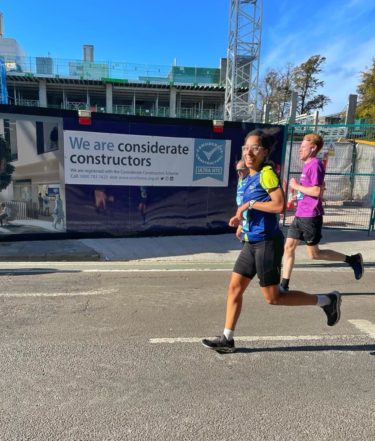
Running the Oxford Half Marathon, still smiling (kind of!) at mile 12!
I love that I get to work on things that are a perfect blend of my interests and hobbies. Speaking of, I’m still a keen sportswoman and will pretty much give any sport a try at least once! I still play football and love to cycle but have recently branched out into tackling triathlons, endurance running (including running the Oxford Half Marathon on my birthday and tackling the upcoming London Marathon in 2023!), hiking and playing basketball. I also enjoy taking part in other public engagement projects with the aim of inspiring young people from similar backgrounds to my own to pursue science careers. Recently, this meant me taking part in our department’s play on the history of neuroimaging!

